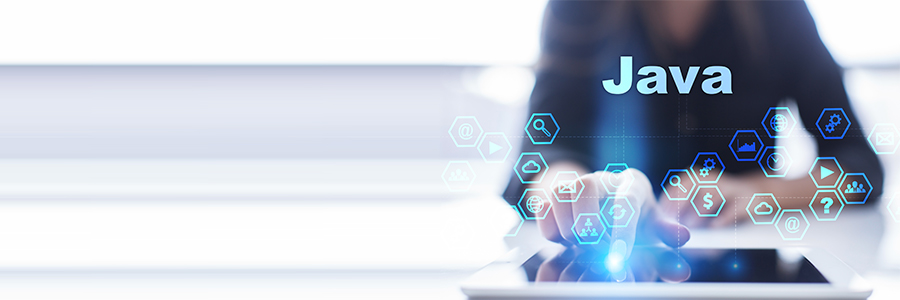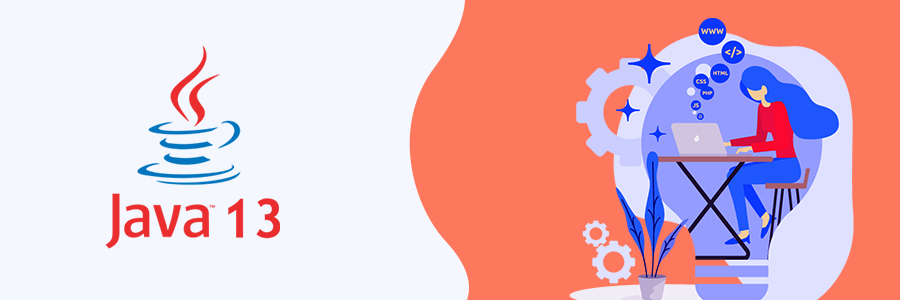Java 13: Complete Guide and Features

We all couldn't believe how fast this year is moving ahead towards its end. In fact, the new Java Version is out which is Java 13. In the meantime, Java engineers ought to have used the short discharge cycles. All things considered, we can now frequently evaluate new capacities and are not murdered at regular intervals by a tremendous scope of new highlights. In this article, we investigate Java 13, which recently dropped in, on the 17th of September,2019.
- Text Blocks replacing Raw String Literals - JEP 355
- Regeneration of Socket API- JEP 353
- ZGC - Unusable Memory returns- JEP 351
- Improvement of Switch Expressions - JEP 354
- Changing Class Data Sharing Archives- JEP 350
From the outset, this does not appear like a lot. Actually, because of the brief timeframe since the arrival of Java 12, we cannot generally anticipate an excessive number of changes. Instead, the discharges among the Long-Term Support (LTS) adaptations are, for the most part, which is there for offering specific highlights as sneak peeks so as to receive feedback from the people or users. The capacities are executed in those JEPs and – when they have arrived at a specific development conveyed with the next arrival of the characterised half-yearly cycle.
Text Blocks are in reality just a little piece of those Raw String Literals (JEP 326) initially anticipated for Java 12. The main execution of Raw String Literals was not considered but the details of the last time from the clients' input brought up numerous issues. The certain subtleties can be found in the mailing list. Java 13 "just" has a multi-line Text Block until further notice.
Yet, that is superior to nothing. All things considered, numerous Java applications procedure code bits from different dialects, for example, SQL or HTML, which as a rule comprise a few lines for clarity. As of not long ago, such strings must be characterised in an exceptionally bulky manner, which is why they are hard to peruse. For instance, additional control directions (Escaping with \n) must be utilised for the purpose of line breaks. Different languages, for example, Scala, Groovy or Kotlin, have since a long time ago offered the probability of characterising Multi-Line texts.
These new Text Blocks utilise three quotes as delimiters and can be utilized at any place where the standard strings are permitted. Listing 1 demonstrates the contrasts among customary and this new Syntax.
Listing 1
1. // Without Text Blocks
2. String html = "<html>\n" +
3. " <body>\n" +
4. " <p>Hello, Escapes</p>\n" +
5. " </body>\n" +
6. " </html>\n";
1. // With Text Blocks
2. String html = """
3. <html>
4. <body>
5. <p>Hello, Text Blocks</p>
6. </body>
7. </html>""";
The opening and shutting triple statements should remain in a different line. In any case, the real substance begins with the subsequent line. This expands the clarity of source code, as the space of the principal line is shown accurately in that source content.
The “java.net.ServerSocket" and "java.net.Socket" APIs, as well as their necessary executions, are the leftovers from JDK 1.0. A large portion of them comprises of heritage Java and the C code, which makes support and extensibility significantly more troublesome. The NioSocketImpl should supplant the obsolete PlainSocketImpl now. NioSocketImpl depends on the previously existing New I/O execution and utilises its current framework in the Java Development Kit.
The past usage is likewise not good with other arranged expansions of this language. For instance, simultaneousness issues frustrate the future utilization of the lightweight client strings.
The most significant change in Java 13 is the substitution of the Keyword break in the Switch articulation by yield. The foundation is the better separation among switch statements (with conceivable break) and couplings with yield. The yield articulation leaves the switch and aftereffect of the present branch return, like an arrival.
A code model follows in Listing 2.
1. // Switch-Statement with break
2. private static String statementBreak(intswitchArg){
3. String str = "not set";
4. switch (switchArg){
5. case 1:
6. case 2:
7. str = "one or two";
8. break;
9. case 3:
10. str = "three";
11. break;
12. };
13. return str;
14. }
1. // Switch-Expression with yield
2. private static String expressionBreakWithValue(intswitchArg){
3. return switch (switchArg){
4. case 1, 2: yield "one or two";
5. case 3: yield "three";
6. default: yield "smaller than one or bigger than three";
7. };
8. }
Above, we can have a view of an announcement with cushion and fail to work out. In the immediate examination pursues a switch articulation with that new Keyword yield and different labels.

Other than the new highlights that are evident to developers, much has occurred in the engine of the JVM and in its class library. (CDS) Class Data Sharing was presented in Java 5. The objective of CDS is to abbreviate the beginning occasions of the Java applications development by putting away specific data about the classes in Class Data Sharing files. This information would then be able to be stacked at runtime as well as utilized by a few JVMs.
Till Java 10, be that as it may, the mutual chronicles were open for the Bootstrap ClassLoader. Beginning with Java 10, Class Data Sharing was reached out by (AppCDS) Application Class Data Sharing. AppCDS empowers the implicit framework and stage class loader just as client characterised class loaders to get to the CDS chronicles. Class records are required to make the CDS documents so as to distinguish the classes to be stacked.
These class records were controlled by preliminary keeps running of the application to figure out which classes were really stacked during the execution. But in Java 12, the default CDS documents are conveyed with the Java Development Kit of course, which depends on the class rundown of the JDK.
Changing CDS Archives presently expand on this. The objective is to spare the new trials of the application. After the execution of an application, just the recently stacked application and the library classes that are not adequately contained in Base Layer CDS are then archived. Command-line commands activate the Dynamic archiving. In a future augmentation, the documenting of classes could run consequently as well as transparently.
The progressions portrayed so far were characterized in the Java Enhancement Proposals. However, there are further adjustments directly in those class libraries. They can be imagined utilizing either JDK API Diff Report Generator or Java Almanac.
